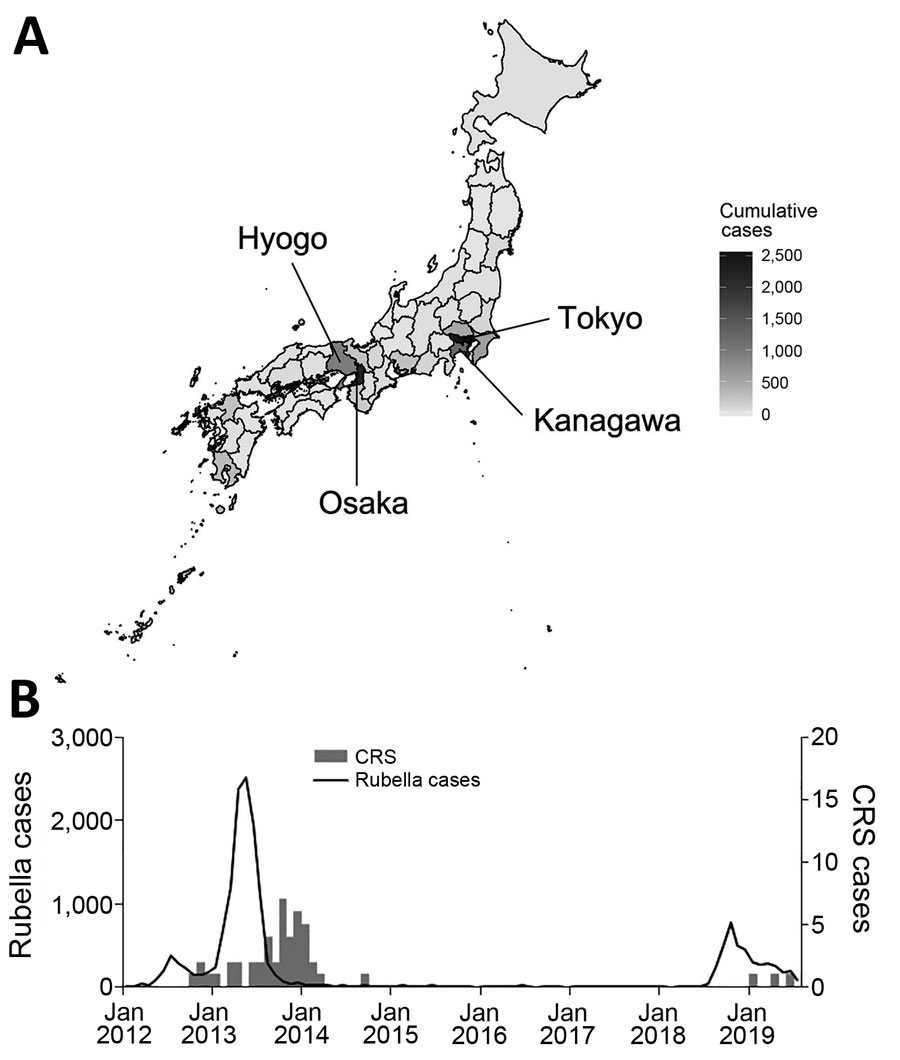Volume 26, Number 6—June 2020
Research
Temporary Fertility Decline after Large Rubella Outbreak, Japan
Figure 1

Figure 1. Spatial and temporal variations of rubella and CRS in Japan, 2013–2019. A) Geospatial variation in cumulative rubella cases by prefecture, 2013. B) Temporal distribution of rubella and CRS cases by month during January 1, 2012–July 31, 2019. Black line indicates number of cases of rubella. Gray bars indicate number of cases of CRS. CRS, congenital rubella syndrome.
Page created: May 18, 2020
Page updated: May 18, 2020
Page reviewed: May 18, 2020
The conclusions, findings, and opinions expressed by authors contributing to this journal do not necessarily reflect the official position of the U.S. Department of Health and Human Services, the Public Health Service, the Centers for Disease Control and Prevention, or the authors' affiliated institutions. Use of trade names is for identification only and does not imply endorsement by any of the groups named above.